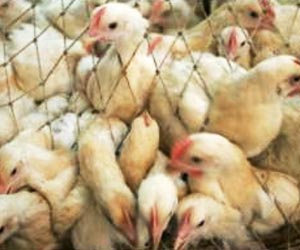The body of Sir Mark Sykes, an important British politician, was exhumed in Britain last week, 89 years after he was felled by Spanish flu. The attempt is to get at some possible clues on the bird flu ravaging the globe now.
The hermetically-sealed coffin was opened as prayers were recited, and samples of the remains of were removed and frozen in liquid nitrogen, for onward transportation to a laboratory. The examination has to be conducted in a special air-tight laboratory to avoid any risk of contamination. The body was reinterred subsequently.Sir Tatton Benvenuto Mark Sykes, aristocratic diplomat and adventurer, was the British government's lead negotiator in a secret 1916 deal with France to carve up the Ottoman Empire, and he laid the groundwork for the boundaries of much of the present-day Middle East.
While negotiating terms of the peace negotiations to end the First World War in Paris early in 1919, Sir Mark became one of the estimated 50 million victims of the so-called Spanish flu and died in his hotel near the Tuilleries Gardens. Like many victims, he was in his prime at just 39.
Ironically while his diplomatic legacy is blamed partly for the never-ending fratricidal conflicts in the region, his body itself could save millions of lives now.
For scientists believe the DNA samples of Sykes could hold valuable information about how the flu bug makes the leap from animals to humans. The epidemic that claimed Sykes’ life in 1919 was also caused by an avian virus, H1N1 - similar to H5N1, the current bird flu strain.
His remains were sealed in a lead-lined coffin, according to the customary practice of the era, and transported to Sledmere House, the handsome stone mansion in east Yorkshire which has served as the Sykes family seat since the 1780s. He was buried in the graveyard of St Mary's Church, adjoining the house.
Advertisement
But the accident of chemistry – the decay of soft tissue encased in lead is dramatically slowed – has presented scientists investigating ways to deal with the inevitable mutation of the H5N1 "bird flu" into a lethal human virus with a unique opportunity to study the behaviour of its predecessor.
Advertisement
Professor John Oxford, the leading virologist based at Queen Mary's College in London, who led the team investigating Sir Mark's remains, said: "He died very late in the epidemic, when the virus had almost burnt itself out. We want to get a grip on how the virus worked both when it was at its most virulent and when it was coming to the end of its life.
"At a time when we are on the verge of the first influenza epidemic of the 21st century, the samples we have taken from Sir Mark have the potential to help us answer some very important questions."
The two-year process of gaining permission from the Diocese of York to carry out the exhumation, involving a special hearing presided over by a High Court judge, and then planning a disinternment with full bio-hazard security precautions, came to its end on 8 September when medical experts, clergy, environmental health officers and the family of Sir Mark gathered to begin uncovering his grave.
Due to a requirement of the diocese that the exhumation be carried out in strict privacy, confirmation that it had taken place was given only Tuesday.
Among the riddles that scientists still have to answer is the precise mechanism of how Spanish flu, which actually originated from a bird in France, killed the people it infected, whether by a lethal viral infection, a combined viral and bacterial infection, or a cytokine storm – where the virus sparks an overwhelming immune response and causes the body to attack itself.
It will take several months to study the 17 samples taken from Sir Mark's remains before any new findings are confirmed from the exhumation project, which has been chronicled by BBC1's Inside Out documentary series.
Sir Mark's descendants are delighted that his influence may reach a different sphere of human endeavour. His grandson, Christopher Sykes, said: "We were all agreed that it was a very good thing and should go ahead. It is rather fascinating that maybe even in his state as a corpse, he might be helping the world in some way."
Once in a generation the virus that causes ordinary flu undergoes a major mutation to create a wholly new strain to which no one has immunity. That triggers a pandemic that can – and has – caused death and illness on a Biblical scale.
Three times in the 20th century flu pandemics have claimed millions of lives worldwide. The last one was in 1968. Experts say the next one is overdue. "This will come, it will be real and only if we plan can we reduce its impact," Sir Liam Donaldson, the Government's Chief Medical Officer, has said.
In 1968 and in 1957 the pandemics were relatively mild, killing fewer than 50,000 in Britain; the average winter flu death toll is 13,000 to 26,000.
However, the 1918 pandemic emerged as the First World War was ending, reaching Glasgow by May 1918 and London in June: 228,000 people died in Britain; worldwide it claimed up to 40 million lives. The next could be worse. The H5N1 avian flu virus, which emerged in 1997, can infect humans and has a death rate of more than 50 per cent. A small tweak to its genetic make-up could create a strain that would sweep the world. A pandemic strain is expected to lose much of its lethality as it gains in infectivity. But even a 2.5 per cent fatality rate, as in 1918, would translate to millions of deaths.
Source-Medindia
GPL/SK






